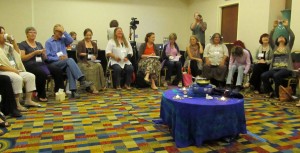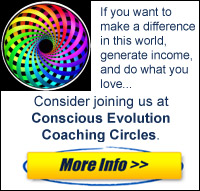TOOLS FOR TRANSFORMATION – JOURNALING
2012
Two Perspectives on Journaling as a Tool for Transformation
Dr. Amit Nagpal, New Delhi, India, and
Dr. Janet Smith Warfield, Florida, USA
_______________________________________________________________________________________
Dr. Amit Nagpal’s Perspective
Journaling is one of the best tools for personal transformation. Let us take a look at how to do journaling for personal growth and transformation purposes. Primarily it can be divided into three categories, viz.
- Tool for self-reflection
- Tool for release of anger
- Journaling as a filter
Tool for self-reflection
Journaling is primarily a tool for self-reflection. Have you ever reflected upon what are your three core values? Once we decide our three core values, we can do a self-reflection every week, “Am I living according to my values? What are the areas I need to improve? What mistakes did I make in these areas?” as part of the journaling process. You can monitor your own growth by reading what you wrote three months back or a year back and compare your current state.
Tool for release of anger
When you are feeling very angry-you have two options, viz.
- Write it out and then tear the pages
- Write it and keep it to monitor your own progress.
What is written in extreme anger should be destroyed as it can be dangerous if it reaches the wrong person by mistake.
Journaling as a filter
Creative people often have phases of creativity blasts and phases of dryness (of ideas). When you are inspired and are flooded with ideas, the journal becomes your filter too. Write everything in the journal before posting on social media. Double check whether it is worth posting and aligned with your three core values (from focus/personal branding perspective). Double check the errors, if you are developing yourself as a professional author or blogger.
Sometimes when you read your own stuff after six months or a year, you feel like laughing at your stupidities or your raw language at that point of time. So journaling can be a source of entertainment too at times.
The trouble of today is the joke of tomorrow.
_____________________________________________________________________________
Dr Amit Nagpal is a Personal Branding Consultant & Deepest Passion Coach. He is based in New Delhi, India and specializes in personal branding with a holistic touch. His philosophy is, “Enlarge as a Human Being, Excel as a Social Media Being and Evolve as a Personal Brand”
______________________________________________________________________________
Dr. Janet Smith Warfield’s Perspective
For the YouTube video, please click here: Journaling
If you prefer a quick read, please continue below.
Benefits:
- Clarity
- Understanding
- Inner Peace
- Healing
- Increased Self-Esteem
- Joy
- Freedom
What You Need:
- Pen or pencil
- Journal or pad of paper
- One hour of uninterrupted time
- Quiet surroundings
- An open mind
Guidelines:
- Don’t censor your thoughts! (I can’t stress this enough.)
- Notice your thoughts.
- Allow your thoughts to flow wherever they want to go.
- Write everything down on your paper
- Just watch what comes through.
Personal Safety:
- What you write is for your eyes alone.
- Feel free to shred what you’ve written at any time.
Don’t be Surprised if:
- You don’t know what to write about. (Just sit in your “not knowing” until thoughts show up.)
- Unexpected emotions suddenly surface. (If these appear, just notice them, and when you are ready, return to your journaling. You may want to use them as a starting point for a new thread of writing.)
Allow Yourself to:
- Misspell words
- Use the wrong word
- Use wrong grammar
- Be judgmental
- Pour out your rage
- Look at your fear
- Grieve
My personal experience with journaling is that I start out struggling with a problem, meander along twisting, winding paths, jump to a seemingly unrelated train of thought that just won’t leave me alone, and end up with new insights and new ideas for moving forward.
______________________________________________________________________________
Dr. Janet Smith Warfield serves wisdom-seekers who want understanding and clarity so they can live peaceful, powerful, prosperous lives. Through her unique combination of holistic, creative, right-brain transformational experiences and 22 years of rigorous, left-brain law practice, she has learned how to sculpt words in atypical ways to shift her listeners into experiences beyond words, transforming turmoil into inner peace. For more information, see wordsculptures.com, janetsmithwarfield.com, and wordsculpturespublishing.com.
_______________________________________________________________________________





![JanetSmithWarfield300[1]](http://janetsmithwarfield.com/wp2/wp-content/uploads/2011/12/JanetSmithWarfield30011-150x150.jpg)





Comment